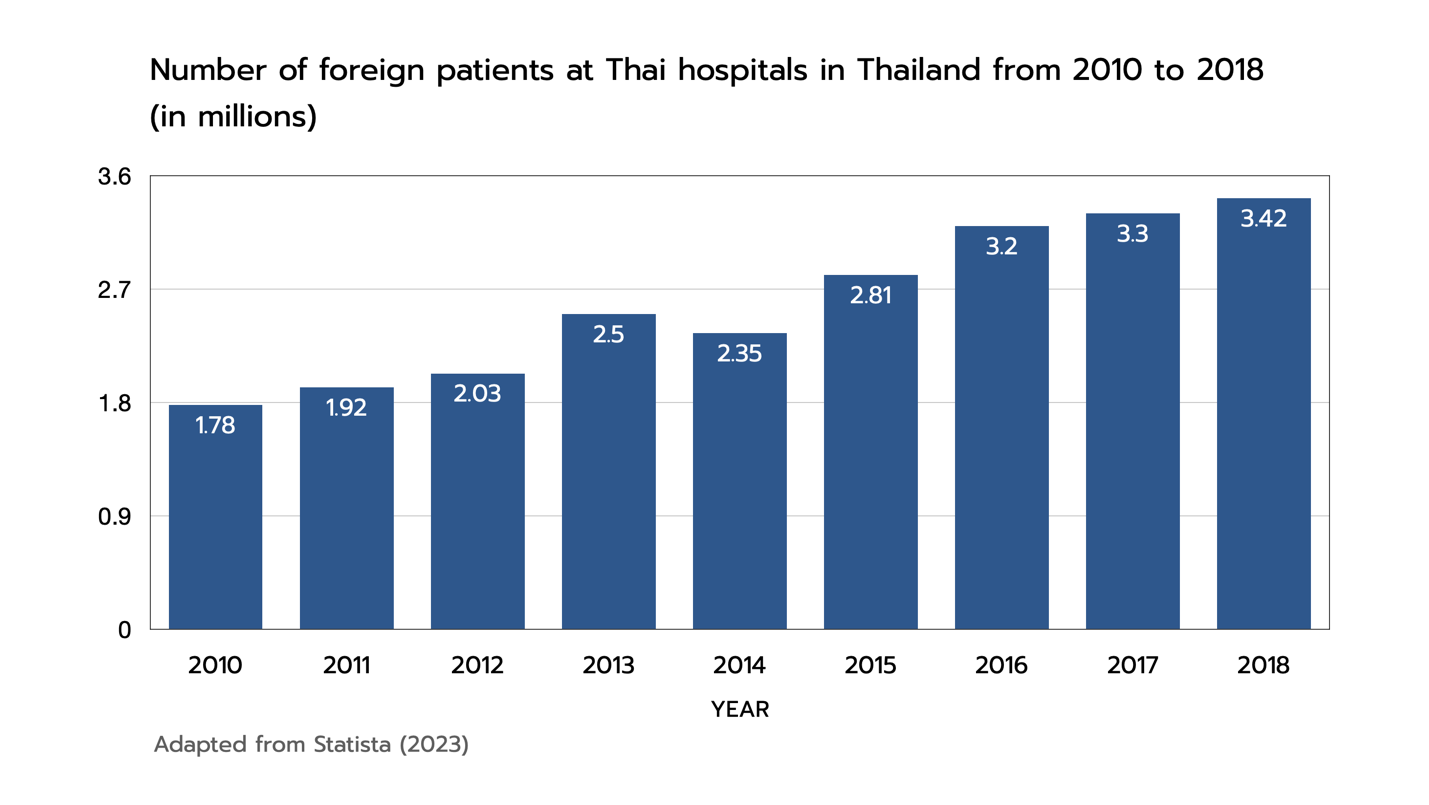‘Medical and Health tourism’ is a relatively mega trend in developed countries. Medical tourism has grown in popularity, particularly among individuals seeking elective operations. Certain countries, like India, Thailand, and Mexico, have become attractive medical tourism destinations due to their reduced costs of medical operations in comparison to more industrialized nations, such as the United States and the United Kingdom.
As more people become interested in wellness, preventive, and alternative and complementary therapies, health tourism is also on the rise. It is becoming increasingly frequent for patients to seek common elective operations and even non-surgical therapies, with cost concerns prevailing over availability. As part of a greater tourism experience, it is also more usual for tourists to undertake relatively small elective procedures, such as minor cosmetic surgery or dental work. So, the medical tourism business is not stable, but rather in a perpetual state of flux due to the globalization of medical demands and industries (Connell, 2013).
In 2017, the financial value of the world medical tourism market reached 2.9 trillion baht, a figure that is expected to grow steadily. Thailand is currently Asia's principal medical service hub with a market share equal to 38% of the total medical tourism market in Asia. The two main groups of medical tourists are those who need lower cost medical treatment and those who need higher medical care. According to the International Healthcare Research Center (IHRC), Thailand’s medical tourism industry is ranked sixth in the world due to its lower medical costs and attractive tourist attractions. The market is expected to grow by about 14% per year, in line with the growth of the number of international tourists visiting Thailand, which is around 12% per year. According to Statista (2023), in 2018, around 3.42 million foreign patients were admitted to Thai hospitals.
Medical tourism in Thailand was worth about $9 billion U.S. dollars in 2019. It was thought that this would reach about $24.4 billion in 2027. These numbers of medical tourists reflect the competitiveness of Thailand in comparison to its competitors, especially those competing nations in the ASEAN Economic Community (AEC).

Medical tourism in Thailand is mostly motivated by cost savings. Medical tourists are primarily interested in affordable pricing, and medical care in Asia is less expensive than in the United States, the Middle East, and many other regions. The cost of medical operations in Asia is just 20 to 30 percent of that in the United States and the United Kingdom, and a number of emerging nations market health care services of high quality for a fraction of the cost. Thailand offers relatively competitive prices for medical operations compared to its competitors in the ASEAN region, as well as a high grade of medical treatment and services. Thailand offers a price advantage relative to other prospective medical tourism destinations.
Thailand offers a vast array of medical tourism procedures, from various types of dentistry to cardiac surgery and transplant operations. Moreover, Thailand has a reputation for offering great medical care, and its physicians are trained to the highest standards. In addition, several of the most influential physicians in Thailand's medical tourism business got their training and board certification abroad.

A medical or health - care facility in a developing country relies on accrediting requirements on a regular basis in order to provide medical care of equivalent quality to that in wealthy nations and to bolster the confidence of overseas patients. Therefore, a number of hospitals in Thailand, both public and private, are accredited by the United States' Joint Commission International (JCI). Since 2002, Bumrungrad International Hospital was the first hospital in Asia to be accredited by the Joint Commission International (JCI). 59 hospitals in Thailand will be accredited by the JCI in 2023. Other assurance programs and awards, such as the Thailand Hospital Accreditation program (HA), administered by the Institute of Hospital Quality Improvement & Accreditation, and ISO, also certify the quality of medical services in Thailand. According to the Healthcare Accreditation Institute (2016), 761 public and private hospitals are now accredited by HA. Safety and quality are of paramount importance to overseas patients.
Thailand is well-known as the land of smiles, and it is well-known that the country and its people welcome visitors with a particular Thai style of hospitality. Foreign patients are provided with attentive treatment by experienced and qualified personnel, which fosters confidence and trust among international patients and encourages them to choose Thailand as their medical tourism destination of choice.
In addition, health care providers who target medical tourists are proficient in foreign languages, particularly English. This is an essential factor for medical tourists from the United States and much of Europe, whose first or second language is English; facilities such as Bumrungrad International Hospital and Bangkok Hospital hire interpreters to facilitate effective communication. Bangkok Hospital Phuket offers interpreters in 15 languages and sees approximately 20,000 international patients per year, but the renowned Bumrungrad International hospital in Bangkok boasts employing 109 interpreters; its whole staff speaks English. Thailand's hospitals have adopted sophisticated medical procedures and invested in cutting-edge technology to give patients with cutting-edge care. The level of satisfaction of medical tourists with Thailand's medical technologies and medical practitioners was extremely high.
Thailand's efforts to establish itself as a major medical tourism hub in Asia have been bolstered by the Thai government's significant and ongoing backing for the industry. They have helped advance Thailand's medical tourism business as part of a long-term government effort to promote the country as the "health tourism center of Asia" in collaboration with private institutions. They have lately unveiled a strategy plan to establish Thailand as a wellness and medical powerhouse. Thai government agencies, including the Ministry of Public Health, the Ministry of Foreign Affairs, the Department of Export Promotion, and the Tourism Authority of Thailand, assist Thai hospitals in promoting medical tourism in international markets by organizing trade shows, exhibitions, and seminars. As mentioned above they are several opportunities for Thailand to become the medical tourism hub in the ASEAN region.
Reference:
Connell, J. (2013). Contemporary medical tourism: Conceptualisation, Culture and Commodification. Tourism Management, 34, 1-13.
Pattharapinyophong, W. (2019). The Opportunities and Challenges for Thailand in Becoming the Medical Tourism Hub of the ASEAN Region. Journal of Management Sciences Suratthani Rajabhat University, 6(1), 1-16.
Statista, Number of foreign patients at Thai hospitals in Thailand from 2010 to 2017, with a forecast for 2018, https://www.statista.com/statistics/1104422/thailand-number-of-foreign-inpatients/, (accessed 16 March 2022).





